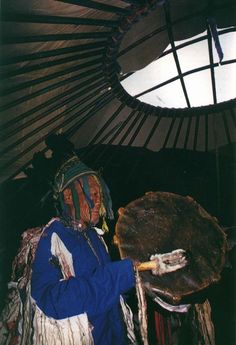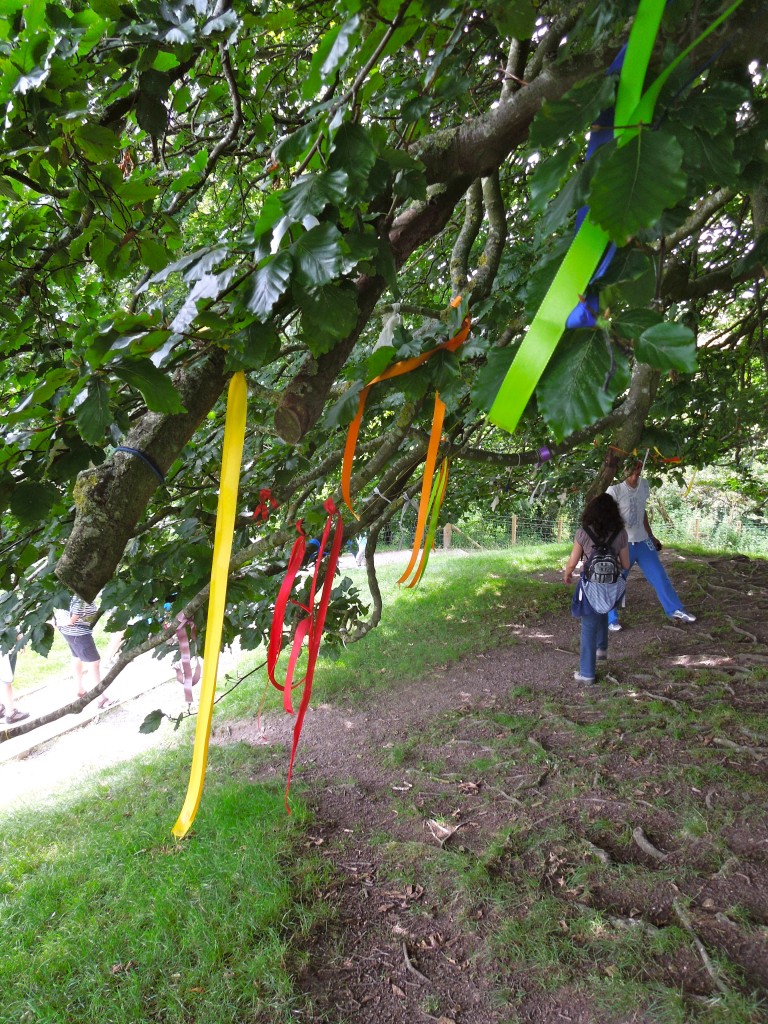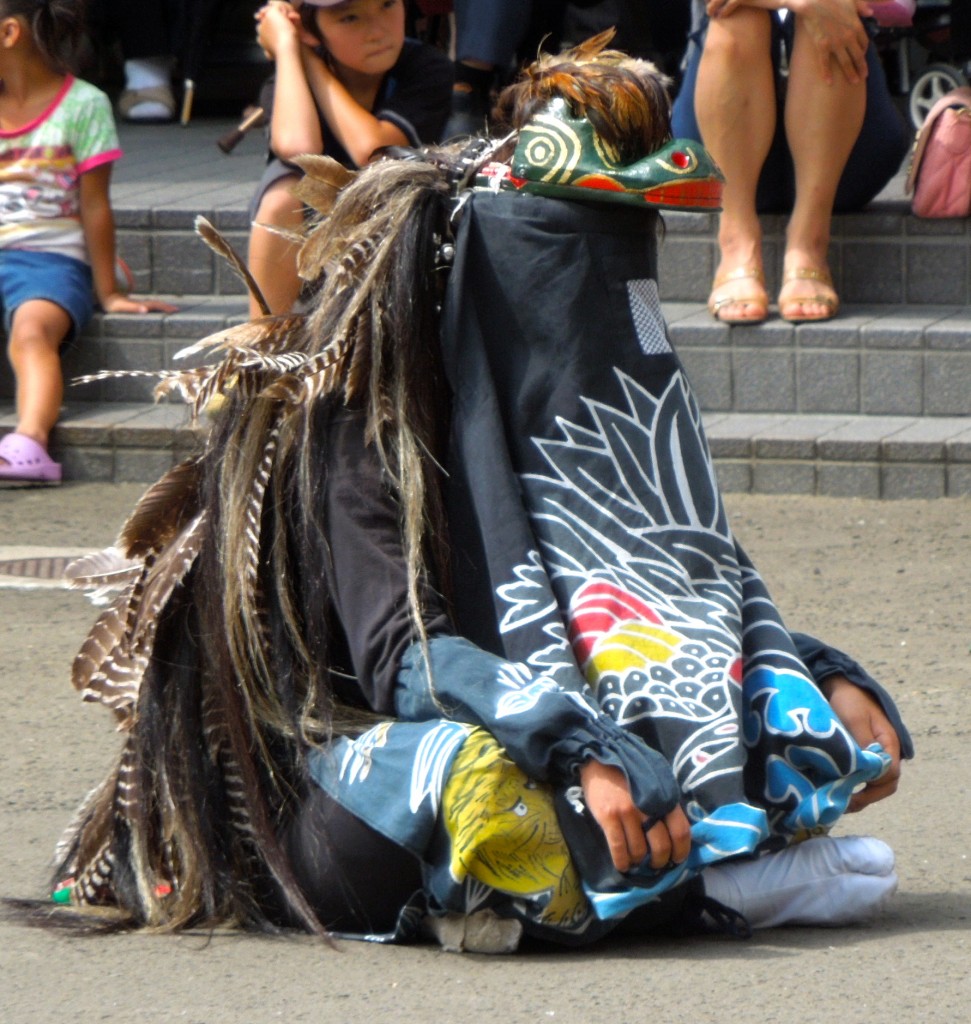 BlueSky is a Mongolian shaman, author and director of The Institute for the Study of Mongolian Shamanism, living in Ulaanbaatar in Mongolia. In the latest edition of the Sacred Hoop magazine (Issue 87, spring 2015, p.42) he writes about an incident that is reminiscent of the founding story of Fushimi Inari, which involves shooting arrows on a hillside. The fox as spirit guide is common to both traditions.
BlueSky is a Mongolian shaman, author and director of The Institute for the Study of Mongolian Shamanism, living in Ulaanbaatar in Mongolia. In the latest edition of the Sacred Hoop magazine (Issue 87, spring 2015, p.42) he writes about an incident that is reminiscent of the founding story of Fushimi Inari, which involves shooting arrows on a hillside. The fox as spirit guide is common to both traditions.
****************************
Quote… Eventually we reached a low hill where we stopped, when suddenly a fox appeared before us and jumped and scared the horses. Somehow, it did not seem an ordinary fox, and my nephew was attentive and stopped me when I said “Let us shoot it.” I was glad I listened to him, because we both suddenly realised that the fox was a spirit, and that Ambii (a dead child) was guiding us. And so, we decided to follow it. The fox guided us to the top of Bayan Uul, which we call Rich Mountain, and then, at the top, it just disappeared. We rushed over to where it had vanished and found the revealed place it had shown us.
*************************************
Elsewhere BlueSky writes of spirit-trees and their transformative power. The description of how evil is placated is echoed in the rites of early Shinto…

Spirit trees are common to East Asia - and around the world. This one was photographed at Avebury in the UK.
It is a powerful thing to realise and to understand that when you practise as a shaman, personal interests never can be maintained, and the help and well being of other people becomes your esteemed mission, and this is not to be changed by any treasure. Everyone was scared of and avoided this place where I sit now, under the sacred amulet tree.
At one time it is where people put their dead ones openly instead of burying them, even animals did not dare to come close. It was a place where horrifying sounds were heard and cold terrifying multi-coloured lights were seen, and when I dared to call to the spirits and seek to understand the reasons of those things happening, I was born again as a shaman.
I transformed this place to the sacred place it is now – instead of a place which people and animals feared – by digging out of the earth some human bones. It was the spirits associated with these bones who created the frightening lights and the terrifying sounds. And when I had collected them, I dug a hole and put into it a black cauldron, with the bones inside it, and then put another black cauldron on top of the first, upside down, and buried both.
Then I tied seven colour swathes to the tree, and begged, prayed and implored the lords and spirits of the place to remove the spirits that scared all the people and animals. Since that time, the tree has changed from one which terrified all who came to it, to a place of peace, the amulet tree, where many people come, gather and pray.
******************************************
To anyone familiar with East Asia, the commonalities of Shinto and continental shamanism are striking. Look for example at this description:
“In Mongolian cosmology, there are said to be ninety-nine sky spirits – called the ninety-nine Tengers or the ninety-nine Skies. Each of the ninety-nine have their own individual names, and all the skies together make the great Tenger – Eternal Blue Sky.”
Tenger equates linguistically to Tenjin, the Sky God of Kitano Tenmangu, who in earthly terms was known as Sugawara no Michizane. And the multiples of three that find ultimate expression in the ninety-nine sky spirits are echoed in the 3×3=9 ritual (san san kudo) of the Shinto wedding ceremony.
Japanese are fond of claiming that Shinto is unique. It’s clearly not. The insularity that sees Shinto as purely Japanese has contemporary ramifications in the frictions between Japan and its neighbours. Instead of seeking differences, contemporary Japan might be better served by emphasising connections and acknowledging a common heritage.

The tengu crow-shaman could come from anywhere in East Asia - or even North America.

Is there any linkage between Shinto and Mongolian Shamanism which can be proven by scientific methods?
There are genetic links between Japanese and Buryat Mongols, which you can check out on various internet sites.
Sorry, my question was not about genetics. I will argue, that “commonalities of Shinto and continental shamanism” without historical and archaeological data are in reality only resemblances. In the history of religion we have a lot of such resemblances – according to the laws of probability. As for “Tenger” and “Tenjin”, I don’t see you can equate linguistically the two things. Modern scholarship has come to the result, that Japanese and Korean are isolated languages. A connection to the Altaic family is not scientifically proved.
Since Korean shamanism is generally agreed to derive from Siberian shamanism, it would be absurd to think that it did not pass into Japan along with the immigrants who came. What kind of scientific proof are you looking for exactly?